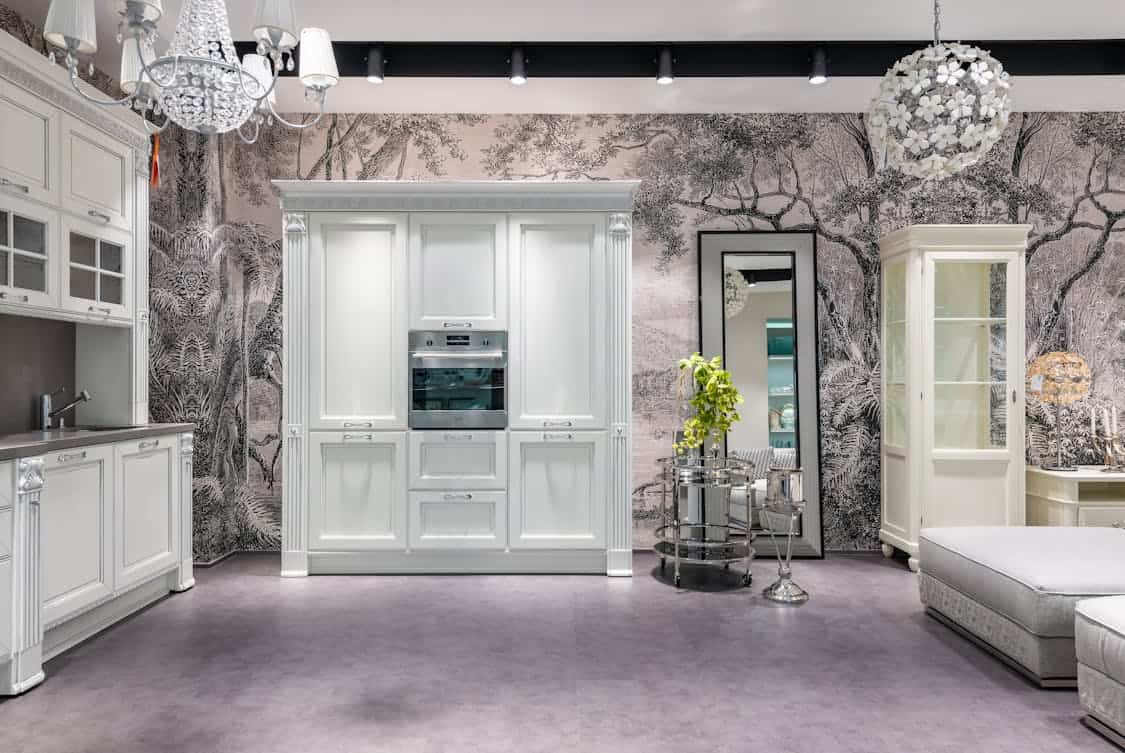Microcement is rapidly gaining traction as a go-to flooring option for modern homes and commercial spaces alike. Known for its sleek appearance and versatility, this material offers a refreshing alternative to traditional flooring solutions. In this article, we will explore the many benefits of microcement, its applications, and why it might just be the stylish solution you’re looking for.
What is Microcement?
Microcement is a thin layer of cement-based material that can be applied to various surfaces, including floors, walls, and even furniture. It is composed of a blend of resins, additives, and pigments, which results in a smooth, seamless finish.
One of the standout features of microcement is its ability to mimic the look of polished concrete, stone, or even wood, making it a versatile choice for various design aesthetics. If you’re looking for high-quality microcement solutions, you’ll find that they offer the perfect blend of style and durability.
The Aesthetic Appeal
When it comes to aesthetics, microcement shines bright. Its minimalist design pairs well with a range of styles, from industrial chic to contemporary elegance. The smooth surface reflects light beautifully, creating an open, airy feel in any room.
With an array of colors and finishes available, homeowners can customize their floors to fit their personal taste. Whether you want a muted grey or a bold hue, microcement offers endless possibilities to express your creativity.
Durability and Longevity
A major selling point of microcement is its durability. Unlike traditional flooring materials, which can wear down or become damaged over time, microcement is resistant to cracks, stains, and water.
This makes it particularly suitable for high-traffic areas such as kitchens and hallways. Plus, when properly applied, microcement can last for decades, providing long-term value without the need for frequent replacements.
Easy Installation and Maintenance
Another advantage of microcement is its relatively straightforward installation process. Unlike traditional flooring options that require extensive preparation, microcement can often be applied over existing surfaces, minimizing time and disruption.
This not only saves homeowners a headache but also cuts down on costs.
Once installed, microcement is easy to maintain. A simple sweep or mop is usually enough to keep it looking fresh. For added protection, many homeowners opt for a sealant, which helps to prevent stains and makes cleaning even easier.
This low-maintenance requirement makes microcement an attractive option for busy lifestyles.
Versatile Applications
Microcement isn’t just for floors. Its adaptability allows it to be used in various applications around the home or business. Think of microcement-covered walls, kitchen countertops, and even outdoor spaces like patios.
This versatility makes it a popular choice for both residential and commercial projects. Whether you’re renovating a cozy apartment or designing a stylish café, microcement can seamlessly integrate into any environment.
Eco-Friendly Option
For those conscious about the environment, microcement ticks many boxes. Its composition is often eco-friendly, consisting of natural materials that don’t release harmful chemicals.
Furthermore, the longevity of microcement means fewer resources are required for replacements and repairs. By choosing microcement, you’re not just enhancing your space; you’re also making a sustainable choice.
Overcoming Common Myths
Despite its many benefits, microcement is not without its myths. One common misconception is that it is overly slippery. While it can be smooth, applying the right texture and finish can significantly reduce slipperiness, making it safe for homes with children or elderly residents.
Another myth is that microcement is only suitable for modern designs. In reality, its versatility allows it to complement a variety of decor styles, from rustic to contemporary.
Cost Considerations
When weighing the cost of microcement, it’s essential to consider both initial and long-term expenses.
While the upfront investment may be higher than some traditional flooring options, the durability and low maintenance costs often make it more economical over time. Homeowners can save on repairs and replacements, making microcement a wise financial choice in the long run.
How to Choose the Right Microcement Finish

Choosing the right finish for your microcement floor can make all the difference. The surface can be customized with various textures and colors, allowing you to match your flooring to your overall design vision.
A matte finish can lend a more subtle, understated look, while a glossy finish can make a striking statement. When selecting the finish, think about the overall vibe you want to create in your space.
Installation Process: What to Expect
The installation of microcement typically involves several steps, starting with surface preparation. This may include cleaning and leveling the existing floor to ensure a smooth application.
Next, a primer is applied to help the microcement adhere properly. After this, the microcement is mixed, applied in layers, and finished with sanding and sealing to achieve the desired look.
Although it can be a labor-intensive process, the end result is well worth the effort.
DIY or Professional Installation?
Some homeowners may consider a DIY approach to installing microcement. While it’s possible for those with a knack for home improvement, hiring a professional is often the safer route.
Professional installers have the experience to navigate potential pitfalls and ensure a flawless finish. Moreover, their expertise can save you from costly mistakes that may arise during the application process.
Real-Life Examples
To illustrate the versatility of microcement, let’s look at some real-life applications. In a chic urban loft, microcement flooring creates a seamless flow from the living room to the kitchen, enhancing the open-concept design.
In a more rustic setting, microcement walls can be paired with wooden accents to create a warm, inviting space. Commercial establishments have also embraced microcement, using it in cafes and retail spaces for its modern look and durability.
Embracing Trends
Microcement has become a popular trend in interior design, and for good reason. Its ability to blend with various styles and remain timeless makes it a top choice for those looking to stay current.
With the rise of open-concept living and minimalist aesthetics, microcement fits perfectly into the modern design narrative, giving homeowners the flexibility to create unique spaces that reflect their personalities.
Innovations in Microcement
The microcement industry is constantly evolving, with new innovations aimed at enhancing its application and performance. Recent advancements include a broader range of colors and textures, allowing for more customization options.
Additionally, developments in sealing technology improve the longevity and stain resistance of microcement, making it an even more appealing choice for homeowners.





